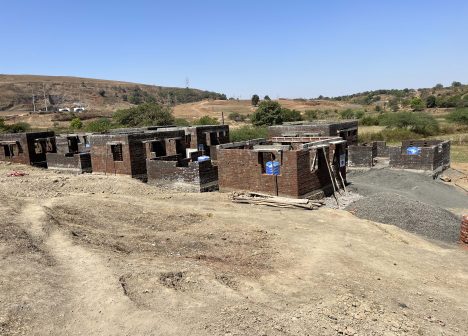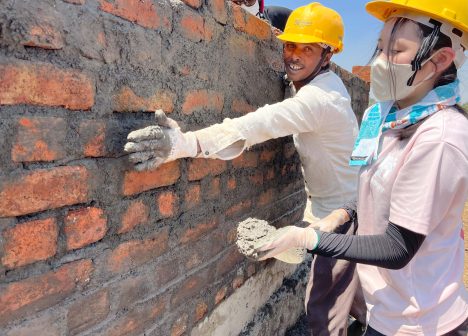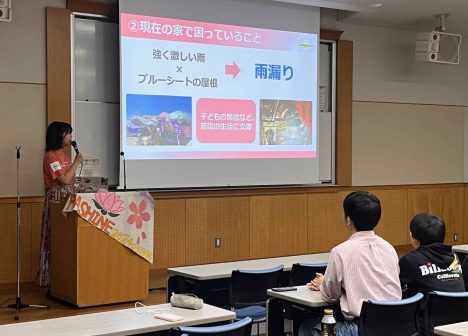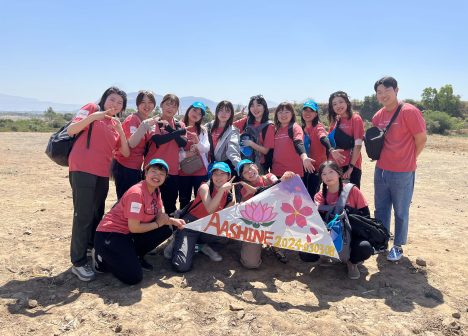In February 2024, fourteen university students from across Japan's campus chapters participated in a special volunteer build in the village of Igatpuri, located in Nashik, Maharashtra State, India as part of a greater project constructing eleven homes. This event marked a significant milestone, celebrating Habitat Japan’s 20th anniversary and being the first Habitat build since the onset of the pandemic and attended by longtime Habitat supporters. Joining student volunteers were nine adult members gathered from the U.S. and Japan, making for 23 team members total who worked five days building four homes.
The village in Igatpuri where the build took place was home to a displaced minority population, with makeshift homes built out of mud and vinyl sheets on a plot of land granted to the people by the Indian government. To construct safe and decent permanent housing for villagers, the Indian Government partnered with Habitat India and launched this project to build eleven houses.
Local villagers were employed as workers to construct homes for their community under the guidance of expert engineers, helping impart them with the expertise to continue building safe homes in their village starting with these first eleven houses. In doing so, Habitat hopes to promote the sustainable development of safe and decent housing in the village.
Before traveling to India to mix cement and mortar and lay the bricks of each home, student volunteers engaged in over 19 pre-build meetings over six months. Through their diligent research, students learned about the languages, culture, housing needs, and more of India.
During the build team members had the opportunity to conduct interviews with families in the community. Each household faced many of the same common issues; Their houses would flood during rainstorms, making it difficult for children to study. Some villagers work as fishermen but can only make about 250 rupees (approx. 460 yen) a day, leading many to make a living as migrant seasonal agricultural workers. Families had access to one small communal solar panel provided by the government that could only partially support their needs. Every night, the student team would meet to share their thoughts and learnings, set goals, and work to make the greatest impact during their limited time.
When volunteers asked soon-to-be homeowners on how they felt about owning their first ever home, villagers shared:
"I feel happy!"
"I could never have imagined I would be a homeowner one day."
"I feel like this is an enormous chance for me and my family."
The village is in an arid region of India, where it is difficult to lumber for building homes. Even with rights to the land, it’s difficult for the villagers to build a home where they can live safely and decently on their own. We hope to contribute to the development of the village by helping provide safe and decent permanent homes.








